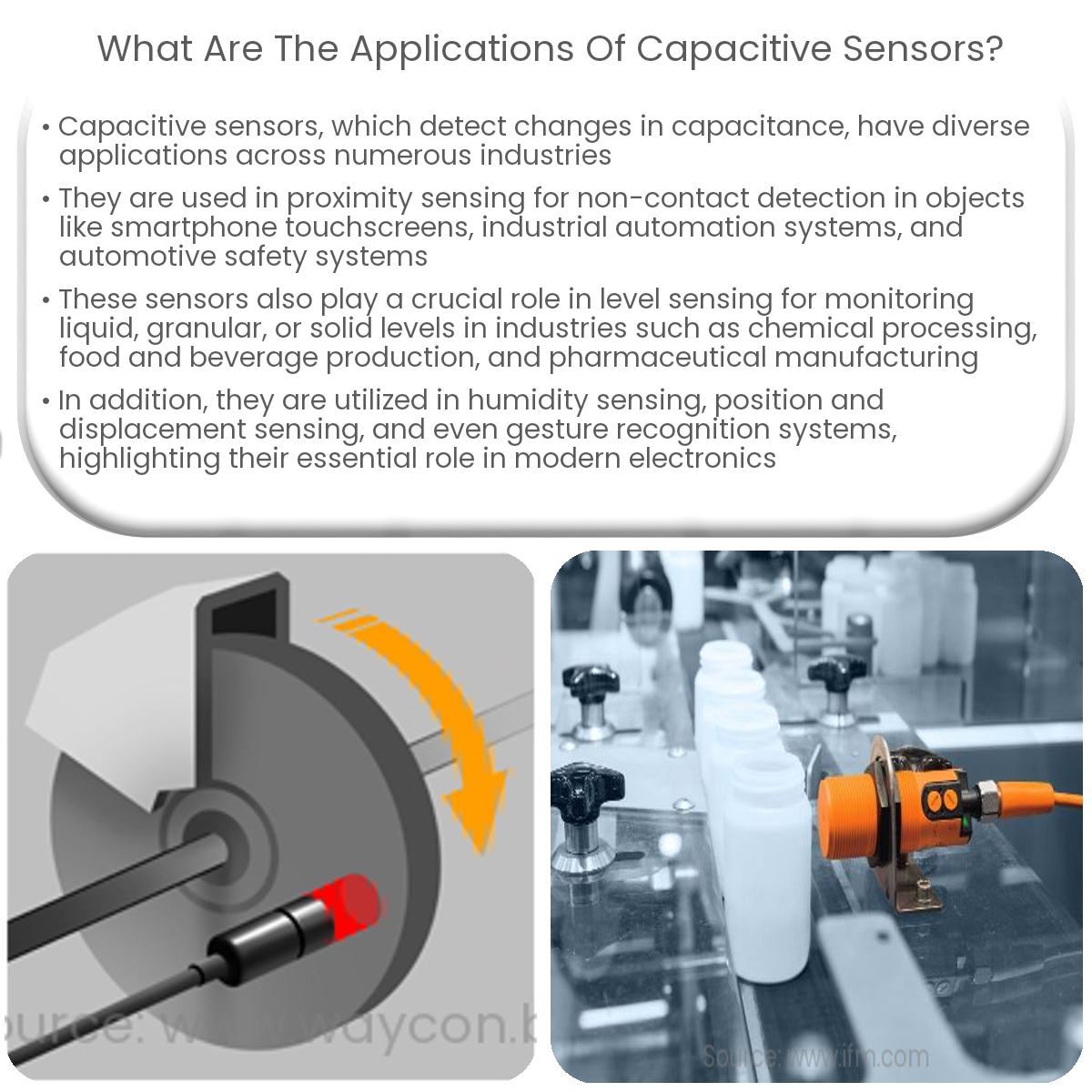Capacitive sensors are versatile devices that detect changes in capacitance, offering a wide range of applications across various industries. This article will discuss some common applications of capacitive sensors.
Applications of Capacitive Sensors
Capacitive sensors are versatile devices that detect changes in capacitance, offering a wide range of applications across various industries. This article will discuss some common applications of capacitive sensors.
Proximity Sensing
Capacitive sensors are frequently used for non-contact detection of objects, thanks to their ability to sense dielectric materials such as plastics, glass, and even liquids. Common applications include:
- Smartphone touchscreens, which detect the user’s finger position.
- Industrial automation systems, for detecting the presence or absence of objects on a production line.
- Automotive safety systems, such as parking sensors that help drivers detect obstacles.
Level Sensing
Capacitive sensors can accurately measure the level of liquids, granular materials, or solids in containers. This is particularly useful in:
- Chemical processing industries, for monitoring the levels of corrosive or hazardous liquids.
- Food and beverage production, ensuring consistent product quality and preventing overflows.
- Pharmaceutical manufacturing, for precise measurement of drug formulations.
Humidity Sensing
Capacitive sensors can measure humidity by detecting changes in capacitance due to moisture absorption in a dielectric material. These sensors are commonly used in:
- Weather stations, for monitoring atmospheric humidity levels.
- Environmental monitoring systems, to ensure optimal humidity conditions in controlled environments like greenhouses or cleanrooms.
- Home appliances, such as dehumidifiers and air conditioners, to maintain comfortable indoor conditions.
Position and Displacement Sensing
Capacitive sensors are widely used for high-resolution position and displacement measurements. Key applications include:
- Precision manufacturing, for quality control and alignment of parts.
- Micromechanical systems, for measuring minute displacements in micro-electromechanical systems (MEMS) devices.
- Aerospace and defense, for monitoring structural deformations and vibrations in aircraft and spacecraft components.
Gesture Recognition
Advancements in capacitive sensing technology have led to the development of gesture recognition systems. These systems are employed in:
- Consumer electronics, for controlling devices like smartphones, tablets, and smartwatches with touch-free gestures.
- Automotive industry, for touch-free control of infotainment systems and other in-car functions.
- Assistive technologies, providing accessible interfaces for individuals with physical limitations.
In summary, capacitive sensors have a wide range of applications in various industries, making them an essential component in modern electronic devices and systems.


